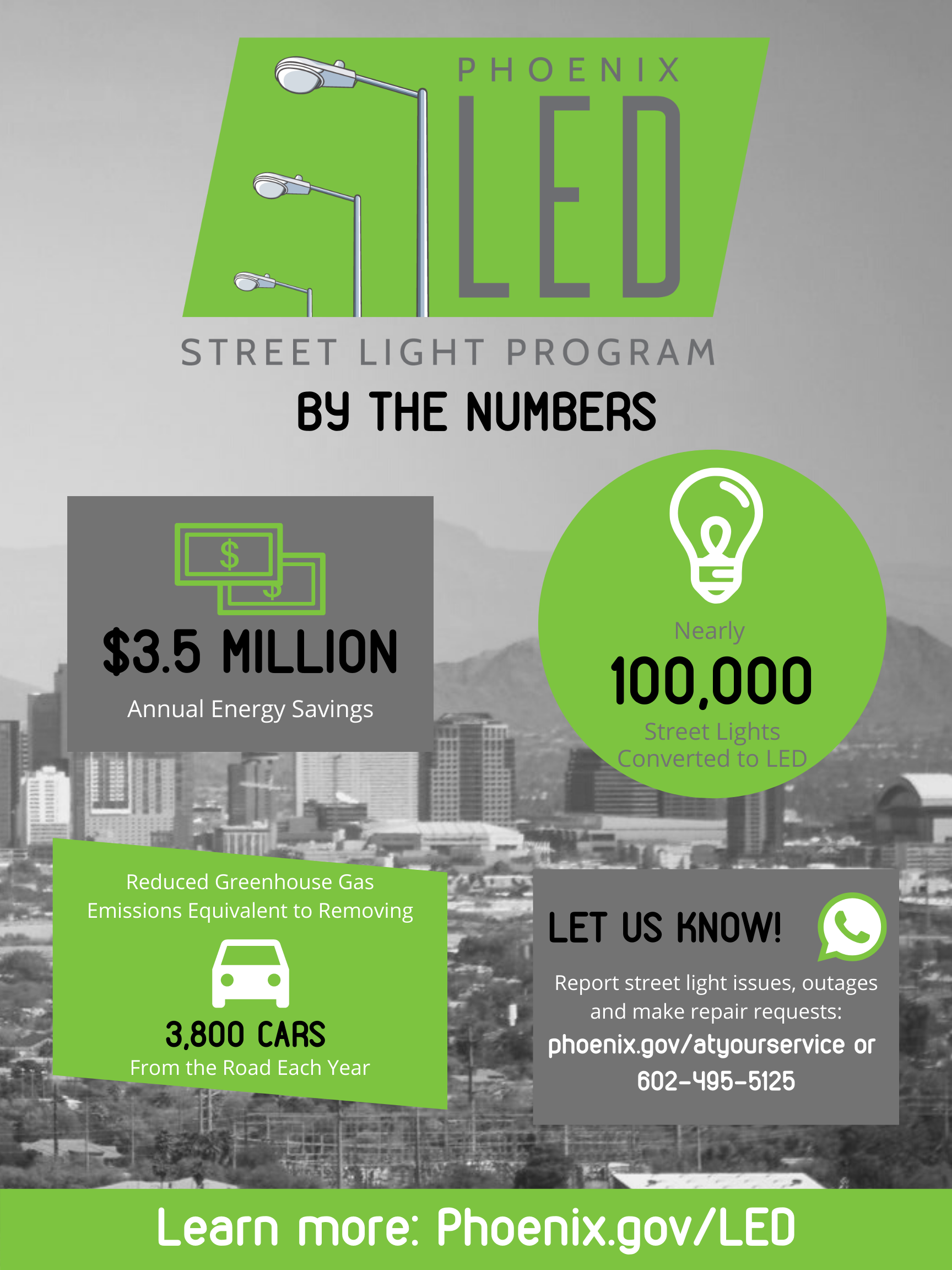
As part of a citywide effort, the city replaced approximately 100,000 existing street light fixtures with energy-efficient light-emitting diode (LED) fixtures. The new fixtures feature a 2,700 kelvin LED, the city’s new kelvin standard for street lights. Over time the full LED street light conversion initiative will actually save money and positions the city to reduce street light electricity use by up to 53 percent. By converting approximately 100,000 street lights to LED, the city estimates it will save approximately $3.5 million in annual energy costs. LED street lights also offer maintenance savings and come with a ten-year warranty.
The city began testing LED energy efficient street lights in 2007 throughout various locations. For details about previous LED test pilots visit this link. After many years of testing, in 2013 the city adopted LED technology as the new standard for all public roadway lighting. In 2015 the city began developing plans for a citywide effort to convert all street lights to LED and initiated a public input process. In 2016, the Council revised the city's standard kelvin level for street lights from 4,000 kelvin to 2,700 kelvin, which is considered a “warmer” color temperature for LED lights. (A light bulb’s color temperature helps identify what the look and feel of the light produced will be. Color temperature of a light bulb is measured in degrees of kelvin on a scale from 1,000 to 10,000.) The revision was based on extensive community input, potential environmental issues, technical lighting standards, and projected energy savings. The new 2,700 kelvin LED lights may appear brighter at the source; however, they do not increase the measurable light levels on the street when compared to those produced by the high pressure sodium light fixtures that are currently in place.
